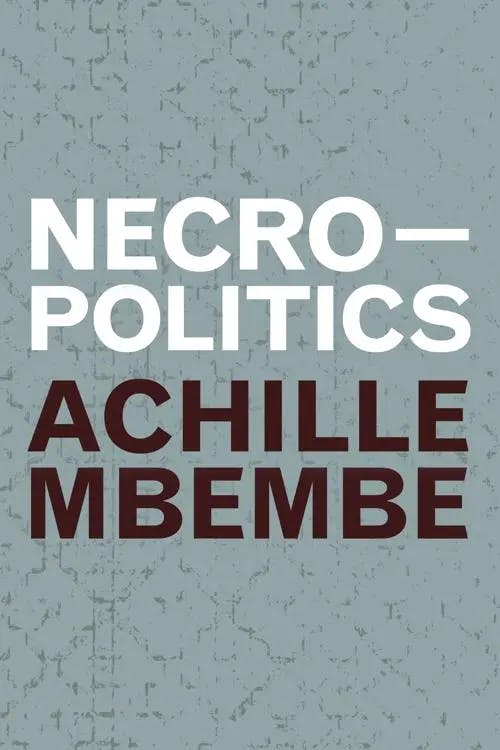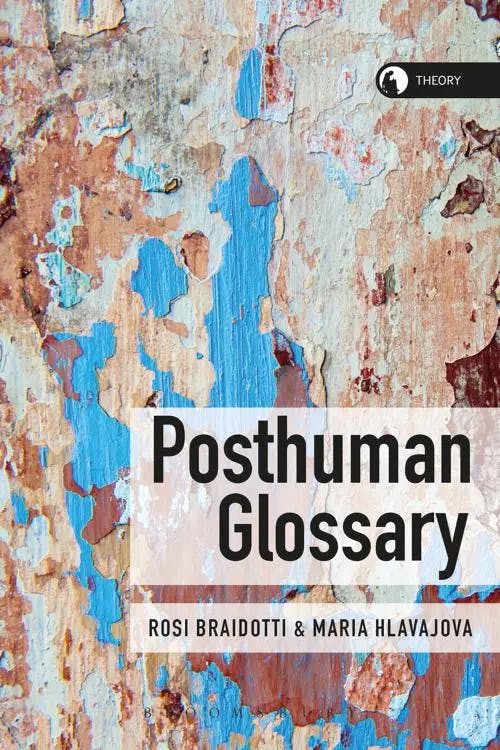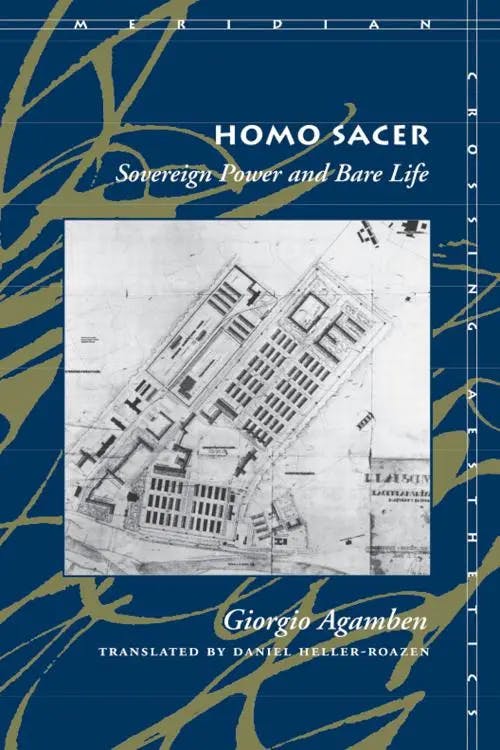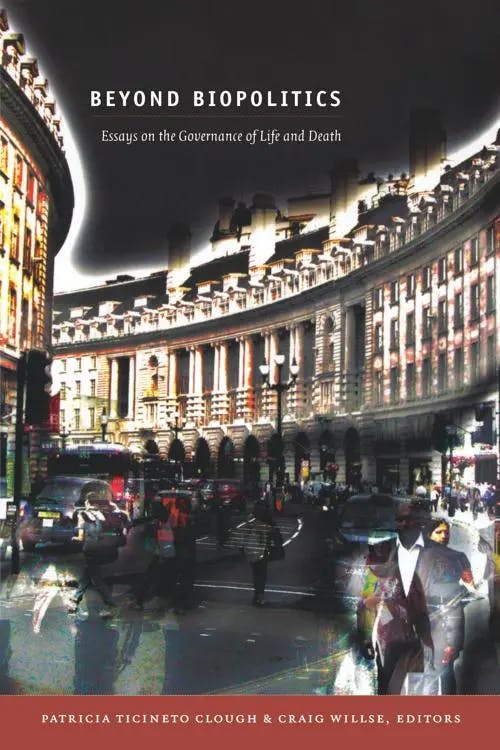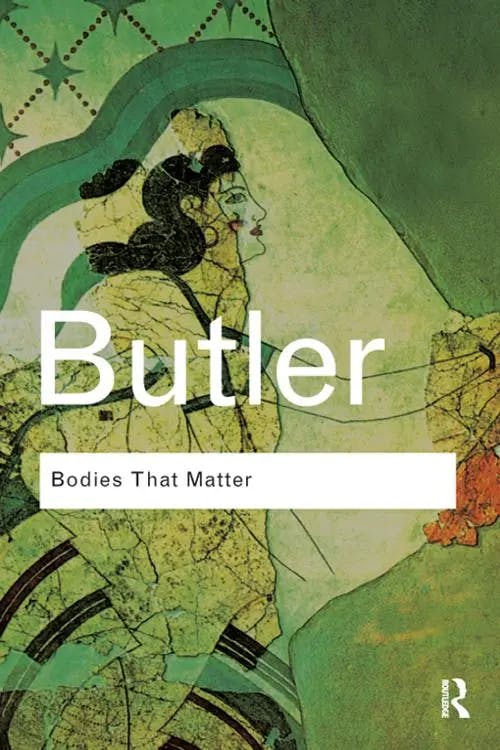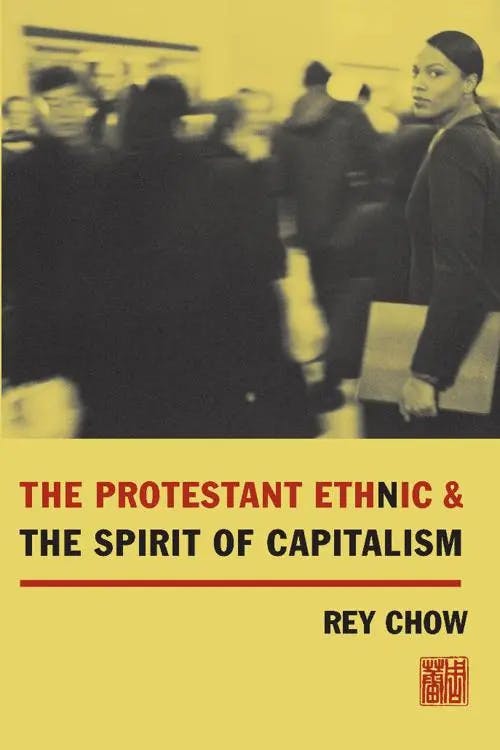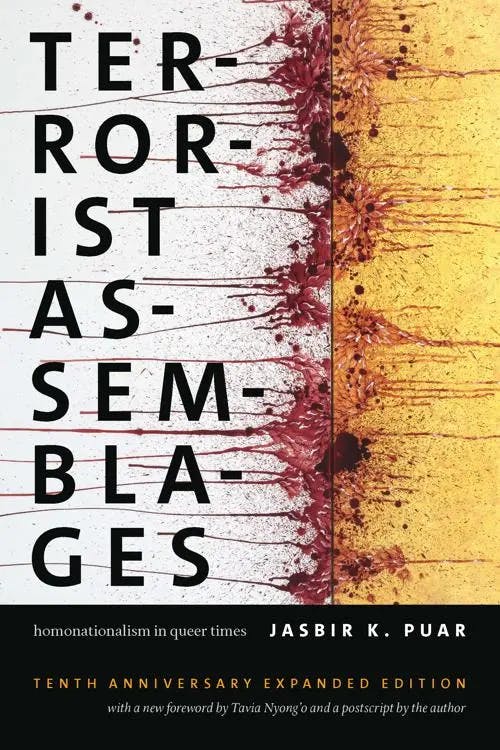What is Necropolitics?
MSt, Women's, Gender & Sexuality Studies (University of Oxford)
Date Published: 07.06.2023,
Last Updated: 09.11.2023
Share this article
Necropolitics: origins and meaning
Necropolitics describes a form of political power that functions by bringing about the social and literal deaths of individuals and populations through direct action or deadly neglect. According to Michel Foucault, the essential engine of power is the right to life and death. Necropolitics is interested in how life is subjugated to the power of death in extreme and everyday ways.
The concept of necropolitics is rooted in Foucault’s theories of biopolitics. Foucault proposes that, before the eighteenth century, power functioned through the right to “take life or let live” (The History of Sexuality, Volume 1, 1976, [1990]), or sovereign power (see our study guide on Foucault’s theories of power). In the past three centuries, sovereign power has transformed into the right to “foster life or disallow it to the point of death,” otherwise known as biopower (Foucault, 1976, [1990]). Biopower does not simply seize or allow life; it actively invests in it, treating individuals and populations as not only legal subjects but also living beings whose biological processes can be harnessed to serve economic and biopolitical desires. Foucault describes how this new mechanism of power is,
working to incite, reinforce, control, monitor, optimize, and organize the forces under it: a power bent on generating forces, making them grow, and ordering them, rather than one dedicated to impeding them, making them submit, or destroying them. (1976, [1990])
Biopower is, therefore, a primarily constructive rather than deductive force.
However, death does not disappear under biopolitics. Instead, death is reconstructed as the reverse side of the imperative to live. Death is necessary to defend life — not of the sovereign, but of the species. As Foucault writes, “entire populations are mobilized for the purpose of wholesale slaughter in the name of life necessity: massacres have become vital” (1976, [1990]). For example, the “war on terror” and US involvement in Iraq and Afghanistan is justified as necessary to protect life, even to defend humanity itself. By rebranding death as a vital act, killing as actually life preserving, biopolitics conceals its deadly tendencies.
Achille Mbembe & Thanatopolitics vs Biopolitics
Foucault eventually names this flip side of biopolitics “thanatopolitics” (“thanato-” meaning “death” in Greek) but does not significantly develop the idea separately from biopolitics (“The Political Technology of Individuals,” Technologies of the Self, 1988). Thanatopolitics remains a mutable term within the scholarship, somewhat replaced by the term “necropolitics.”
While used similarly to thanatopolitics, necropolitics (from the Greek “nekros” meaning “corpse”) has developed its own scholarship and theory. Achille Mbembe coined the term in his influential 2003 essay, later incorporated into his book of the same name, Necropolitics (2019). Mbembe begins,
"The ultimate expression of sovereignty largely resides in the power and capacity to dictate who is able to live and who must die. [...] To be sovereign is to exert one’s control over mortality and to define life as the deployment and manifestation of power." (2019). Following his summary of Foucault’s theories of sovereignty and biopower, Mbembe asks, "Can the notion of biopower account for the contemporary ways in which the political takes as its primary and absolute objective the enemy’s murder, doing so under the guise of war, resistance, or the war on terror?" (2019)
Achille Mbembe
"The ultimate expression of sovereignty largely resides in the power and capacity to dictate who is able to live and who must die. [...] To be sovereign is to exert one’s control over mortality and to define life as the deployment and manifestation of power." (2019). Following his summary of Foucault’s theories of sovereignty and biopower, Mbembe asks, "Can the notion of biopower account for the contemporary ways in which the political takes as its primary and absolute objective the enemy’s murder, doing so under the guise of war, resistance, or the war on terror?" (2019)
Finding Foucault’s account of biopower alone insufficient, Mbembe addresses not only “the generalized instrumentalization of human existence” but also “the material destruction of human bodies and populations” (2019). While biopolitics reframes death as a necessary byproduct of optimizing life, Mbembe takes death as his starting point. The shift from biopolitics to necropolitics, as Jasbir K. Puar puts it, “foregrounds death decoupled from the project of living—a direct relation to killing that renders impossible any subterfuge in a hallucinating disavowal of death in modernity” (Terrorist Assemblages, 2007, [2018]). Foucault’s biopolitics reveals how power subjugates biological processes and life itself to its interests; Mbembe’s necropolitics exposes “contemporary forms of the subjugation of life to the power of death” (2019).
Although necropolitics revises biopolitics, the two ideas are intertwined. They are “not opposites but rather two sides of the same coin,” as Christine Quinan writes:
They function like bifocal lenses that allow us to analyse power relations and examine the inextricable politics of life and death (“Necropolitics,” 2018)
Edited by Rosi Braidotti & Maria Hlavajova
They function like bifocal lenses that allow us to analyse power relations and examine the inextricable politics of life and death (“Necropolitics,” 2018)
Through the use of both biopolitics and necropolitics, we can understand how power permeates and polices life and death both by encouraging the lives of those deemed beneficial to the body politic and by bringing about the deaths of those who might endanger it.
Enemies and states of exception
Throughout Necropolitics, Mbembe analyzes how terror and death drive contemporary politics. He argues that contemporary powers are compelled to construct ultimate enemies, threats to the life of the body politic that must be conquered. Willing to pursue the enemy at all costs, states create spaces outside of the law, and the normal rules of life and death: “states of exception” that increasingly extend into everyday life.
For Mbembe, the violence “hitherto more or less hidden” in democracies, and biopolitical thinking, “grips the imagination and is increasingly difficult to escape” (2019). Mbembe writes,
Nearly everywhere the political order is re-constituting itself as a form of organization for death. Little by little, a terror that is molecular in essence and allegedly defensive is seeking legitimation by blurring the relations between violence, murder, and the law, faith, commandment, and obedience, the norm and the exception, and even freedom, tracking, and security. No longer is the concern to eliminate, via the law and justice, murder from the books of life in common. Every occasion is now one in which the supreme stake is to be risked. (2019)
Our modern impulse toward death, Mbembe argues, is driven by “the desire for an enemy, the desire for apartheid (for separation and enclaving), the fantasy of extermination” (2019). Throughout history, many populations have become the object of this conquering desire — indigenous, Black, Jewish, Muslim; foreigner, migrant, intruder. But, Mbembe posits, this desired perfect enemy does not and never will exist, so must be continually invented.
While this invented enemy is often an “other,” Mbembe points out that neoliberal states also develop a “conviction that the fiercest and most intrepid enemies had lodged themselves in the deepest pores of the nation” (2019). In pursuit of this enemy within, states resort to extreme measures such as enacting emergency laws, extending powers of the police and intelligence services, infiltrating people’s homes and private affairs, and deporting or detaining populations. These measures arise in the name of self-defense, and their effects need not necessarily land on those who originally slighted or threatened the neoliberal state, “merely on those who resemble them” (Mbembe, 2019). Desiring an enemy, the state looks for an external threat but turns back on itself, finding enemies within who must be integrated into biopolitical systems or eradicated via necropolitical means.
In pursuing this enemy, states do not follow traditional rules of law, instead creating what Giorgio Agamben calls “states of exception.” In Home Sacer (1998), Agamben re-evaluates biopolitics through the ancient figure of the “homo sacer,” who could be killed with impunity. Agamben distinguishes between bare life (zoē), common to all living beings, and political life (bios). He follows figures banned from political existence throughout history, from Roman exiles to those held in Nazi concentration camps. In places like the camps, Agamben identifies “states of exception” where traditional rules of life and death are not followed and people are reduced to bare life, or an even more precarious existence — or killed with impunity. Agamben claims that these states of exception, while defined as outside of the rule of the law, actually constitute political rule.
In the age of bio-/necropower, these states of exception can be extended indefinitely. Agamben writes,
If it is the sovereign who, insofar as he decides on the state of exception, has the power to decide which life may be killed without the commission of homicide, in the age of biopolitics this power becomes emancipated from the state of exception and transformed into the power to decide the point at which life ceases to be politically relevant. (1998)
Giorgio Agamben
If it is the sovereign who, insofar as he decides on the state of exception, has the power to decide which life may be killed without the commission of homicide, in the age of biopolitics this power becomes emancipated from the state of exception and transformed into the power to decide the point at which life ceases to be politically relevant. (1998)
Agamben draws his concept of politically irrelevant or “unworthy” life from discussions of euthanasia and the treatment of people with physical and mental disabilities. According to critical disability theorists, a major reason these groups are excluded from political life is because they are not considered useful to capitalist production. One could argue the treatment of the elderly in the US — often involving neglect, isolation, or relegation into care homes — also reveals a disregard for life considered politically irrelevant.
When life is the ultimate goal of the state, life that does not have value — or, worse, threatens state-sanctioned life — must be eliminated.
Building on power’s ability to designate life unworthy of being lived, Mbembe proposes that necropolitical thinking can construct enemies as not properly living in the first place. Mbembe describes the “permanent work of separation” under colonization:
on one side, my living body; on the other, all those “body-things” surrounding it; on one side, my human flesh, through which all those other “flesh-things” and “flesh-meats” exist for me. (2019)
Here is a distinction between the truly living, the truly human, and those who must serve it or be eliminated.
Mbembe argues that liberal democracies rely on division to survive. Once the separators of masters and slaves, neoliberal states now have the power to name allies and enemies of humanity, permitting open violence in the name of human rights, international law, democracy, or “civilization.”
Death-worlds and living death
Building on Agamben’s “state of exception,” Mbembe argues for the existence of “death-worlds, that is, new and unique forms of social existence in which vast populations are subjected to living conditions that confer upon them the status of the living dead” (2019). These death-worlds can be sites of obvious war, terror, and genocide, in which maximum destruction is the priority, often justified by a sense of emergency. In these cases, entire populations become “collateral damage” — if not enemies to be exterminated. Mbembe also explores “repressed topographies of cruelty,” such as the plantation and the colony. Necropolitics helps Mbembe read these sites in which populations are held in a form of living death. Other scholars have developed related concepts, like social death and slow death, which are also useful when thinking about necropolitics.
When discussing the plantation, Mbembe writes,
The slave’s labor is needed and used, so he is therefore kept alive, but in a state of injury, in a phantom-like world of horrors and intense cruelty and profanity. [...] Violence, here, becomes an element in manners, like whipping, or taking the slave’s life itself: an act of caprice and pure destruction aimed at instilling terror. Slave life, in many ways, is a form of death-in-life. (2019)
Achille Mbembe
The slave’s labor is needed and used, so he is therefore kept alive, but in a state of injury, in a phantom-like world of horrors and intense cruelty and profanity. [...] Violence, here, becomes an element in manners, like whipping, or taking the slave’s life itself: an act of caprice and pure destruction aimed at instilling terror. Slave life, in many ways, is a form of death-in-life. (2019)
This death-in-life turns the enslaved person into the “living dead,” not only stripped of political existence but also treated as an object not possessing true human life.
Mbembe’s notion of living death can also be compared to Orlando Patterson’s concept of “social death,” proposed in Slavery and Social Death (1982, [2018]). Through social death, the enslaved person is either “ritually incorporated as the permanent enemy on the inside” and the symbol of the defeated enemy, or they are an insider previously accepted in the community but now expelled because of “a failure to meet certain minimal legal or socioeconomic norms of behavior” (Patterson, 1982, [2018]).
The concept of social death, and its two forms, can be useful for thinking about everyday death-worlds and who is denied full life.
Lauren Berlant responds to Mbembe’s notions of death-worlds and living death by proposing the concept of “slow death.” In Cruel Optimism (2011), Berlant defines slow death as “the physical wearing out of a population in a way that points to its deterioration as a defining condition of its experience and historical existence.” Reconsidering the ways sovereignty regulates life and death, Berlant offers a new way to conceptualize an experience,
simultaneously at an extreme and in a zone of ordinariness, where life building and the attrition of human life are indistinguishable, and where it is hard to distinguish modes of incoherence, distractedness, and habituation from deliberate and deliberative activity, as they are all involved in the reproduction of predictable life. (2011)
Lauren Berlant
simultaneously at an extreme and in a zone of ordinariness, where life building and the attrition of human life are indistinguishable, and where it is hard to distinguish modes of incoherence, distractedness, and habituation from deliberate and deliberative activity, as they are all involved in the reproduction of predictable life. (2011)
In other words, Berlant looks at the experience of living under oppressive conditions in a state that systematically works against your flourishing. Under biopolitics and necropolitics, life and death, extreme and ordinary, are simultaneously taken to their extremes and entangled.
Returning to Mbembe’s example of the plantation, slavery is one example of how, as Patricia Ticineto Clough and Craig Willse argue in Beyond Biopolitics (2011), living death or deadly living can be politically and economically profitable. In his contribution to the collection, Eyal Weizman describes modern necropolitics as embracing “an economic model [...] according to which various forms of suffering can be calculated (as if they were algorithms in mathematical minimum problems), evaluated, and acted upon” (2011). The state can then determine which “thanto-tactics,” or death-making tools (such as targeted assassinations), to employ (Weizman, 2011).
Both living death and permanent death are profitable under necropolitics. Ticineto Clough and Willse write,
in neoliberalism death would not just be an excision to eliminate social and economic costs, but would itself be productive in an affect economy that circulates, multiplies, and invests in death. (2011)
Edited by Patricia Ticineto Clough & Craig Willse
in neoliberalism death would not just be an excision to eliminate social and economic costs, but would itself be productive in an affect economy that circulates, multiplies, and invests in death. (2011)
Mbembe’s concepts of death-worlds and the living dead have inspired scholarship on a wide range of people, populations, and places beyond the plantation and the colony. Such research examines many groups whose experiences can be understood through necropolitics — incarcerated people, refugees, victims of torture, HIV-positive individuals. For example, the collection Necropolitics (2015) focuses on mass graves and exhumations across the world, while R. Guy Emerson examines the “living death” of inhabitants in Mexican towns overrun by organized crime and resistance in Necropolitics (2019). In the next section, we explore one particularly burgeoning area of scholarship: the intersection of necropolitics and queer/trans theories.
Queer necropolitics
Death, both living and permanent, has long been a focus of scholarship on queer life. In Bodies That Matter (1993, [2011]), Judith Butler considers how “regulatory norms” — a concept taken from Foucault — such as heterosexuality and the gender binary dictate “what qualifies as a viable body” and what fails “to qualify as the fully human,” falling into a “domain of abjected bodies, a field of deformation.” Butler asks,
What challenge does that excluded and abjected realm produce [...] that might force a radical rearticulation of what qualifies as bodies that matter, ways of living that count as “life,” lives worth protecting, lives worth saving, lives worth grieving? (1993, [2011])
Judith Butler
What challenge does that excluded and abjected realm produce [...] that might force a radical rearticulation of what qualifies as bodies that matter, ways of living that count as “life,” lives worth protecting, lives worth saving, lives worth grieving? (1993, [2011])
Butler touches on the core of biopolitics, not only the power to determine who must live and who must die but also the power to foster certain lives as viable and reject others to the point of death, to the point of not grieving their deaths — even, Mbembe might argue, celebrating them. In Undoing Gender (2004), Butler further considers what makes for a “grievable” life, or a life given the “sanctity [...] sufficient to mobilize the forces of war.”
Jasbir K. Puar investigates how life and death mobilize the forces of war, particularly the “war on terror,” and how developing neoliberal biopolitics treat queer lives. In her groundbreaking book Terrorist Assemblages (2007, [2018]), Puar emerges as a leading scholar of necropolitics, combining biopolitics, queer theory, and postcolonial theory to examine how terrorism, Islamophobia, and nationalism intersect with queerness.
Speaking generally, Puar points out the divided legacy of Foucault’s The History of Sexuality: scholars of race and postcolonialism take up biopolitics while queer scholars, as Rey Chow argues, tend to “privilege sexuality in the narrow sense—as having to do with sexual intercourse, sex acts, and erotics” (The Protestant Ethnic and the Spirit of Capitalism, 2002). Chow argues that scholars must redress this failure to properly consider biopolitics. Chow writes,
Seen in the light of biopower, sexuality is no longer clearly distinguishable from the entire problematic of the reproduction of human life that is, in modern times, always racially and ethnically inflected. Race and ethnicity are thus coterminous with sexuality, just as sexuality is implicated in race and ethnicity. (2002)
Rey Chow
Seen in the light of biopower, sexuality is no longer clearly distinguishable from the entire problematic of the reproduction of human life that is, in modern times, always racially and ethnically inflected. Race and ethnicity are thus coterminous with sexuality, just as sexuality is implicated in race and ethnicity. (2002)
Puar responds to Chow’s call to examine how race, ethnicity, and sexuality overlap within biopolitics — and necropolitics.
Puar focuses on how some queer subjects are not subjected to death but actually “folded (back) into life” and made useful to power (2007, [2018]). Proposing the term “homonationalism,” Puar describes how nationalist ideologies selectively champion LGBT rights, resulting in the further oppression of less “acceptable” or “desirable” queer, racialized, and sexualized groups. Specifically, Puar examines how Western powers present themselves as champions of (a particular kind of) freedom to justify their actions against Islamic countries and Muslim people. Puar argues that neoliberal states present their enemies as grossly intolerant toward women and queer people, offering the “enlightened West” as liberators. In this Western view, the hijab is reduced to only a symbol of oppression, the idea of queer life in the Middle East made unimaginable. Meanwhile, according to Puar, the neoliberal state paints itself as the picture of tolerance, even as it commits atrocities abroad — and as women and queer people on the homefront continue to face oppression. Puar argues that queer and trans people who do not follow a certain script, specifically queer and trans people of color, are seen as disposable.
Ultimately, Puar asks,
How do queers reproduce life, and Which queers are folded into life? [...] How is life weighted, disciplined into subjecthood, narrated into population, and fostered for living? Does this securitization of queers entail deferred death or dying for others, and if so, for whom? (2008, [2017])
Jasbir K. Puar
How do queers reproduce life, and Which queers are folded into life? [...] How is life weighted, disciplined into subjecthood, narrated into population, and fostered for living? Does this securitization of queers entail deferred death or dying for others, and if so, for whom? (2008, [2017])
Responding to Puar’s questions, the contributors to Queer Necropolitics (2014) explore both “queer subjects invited into life and queerly abjected populations marked for death,” reading “queer livability alongside killability, rescue alongside disposability, protection alongside abandonment and celebration alongside violent erasure” (Haritaworn, Kunstman, and Posocco). As editors Jin Haritaworn, Adi Kunstman, and Silvia Posocco write, Queer Necropolitics aims to queer — to unsettle, to reimagine, to look sideways at — necropolitical thinking by interrogating “claims to queerness in the face(s) of death, both spectacular and banal” (2014). These faces of death range from “war” and “imperial invasion” to the “completely normalized violence of the market,” or the forms of violence incorporated into capitalism itself (2014).
Drawing upon insights from Mbembe, Patterson, Berlant, Puar, and Butler, the contributors to Queer Necropolitics examine how death is an everyday occurrence and in fact a constitutive political principle, even in places that claim distance from it.
Terrorist Assemblages and Queer Necropolitics serve as examples of how necropolitics can be applied to and re-examined through other scholarly fields, and how scholarship on necropolitics continues to promise new ways of thinking.
Conclusion
Thinking about necropolitics helps us “recognize the deadly workings of power” (Haritaworn, Kunstman, and Posocco, 2014). As state power is increasingly entwined with our very lives and deaths, the questions raised by necropolitics invite scholars to address a wide variety of contemporary issues, from responses to the Covid-19 pandemic to corporal punishment.
Recent scholarship addresses how biopolitics and necropolitics result in the “systematic monitoring and regulation of living organisms,” both human and nonhuman; Quinan, for example, offers “agricultural techniques, water management and animal husbandry” as just three examples of these systems (2018). In Biopolitics of the More-Than-Human (2020), Joseph Pugliese examines the ecological effects of human warfare and colonialism, highlighting how nonhuman life forms are entangled with the same violent biopolitical and necropolitical regimes as humans.
The emerging field of Queer Death Studies (QDS) draws upon necropolitics to examine the necropowers of capitalism, colonialism, and Anthropocentrism. As Marietta Radomska and Nina Lykke explain, QDS highlights deaths of those who “differ from the normative human subject in terms of gender, racialization, class, geopolitical situatedness, able-bodiedness, and species” (“Queer Death Studies,” More Posthuman Glossary, 2022). While these deaths are often ignored, those working in QDS recognize that approaching death from the perspective of these subjects may give us new insights into life, death, and the relationship between them.
Ultimately, necropolitics asks us to consider whose lives and deaths are grievable, profitable, and desirable, questions that can stimulate insightful scholarship and, perhaps, purposeful political action.
Further necropolitics reading on Perlego
The Omnibus Homo Sacer (2017) by Giorgio Agamben
Queer Terror: Life, Death, and Desire in the Settler Colony (2018) by C. Heike Schotten
Necropolitics: Mass Graves and Exhumations in the Age of Human Rights (2015) edited by Francisco Ferrándiz and Antonius C. G. M. Robben
Necropolitics: Living Death in Mexico (2019) by R. Guy Emerson
Biopolitics of the More-Than-Human (2020) by Joseph Pugliese
Biopolitics, Necropolitics, Cosmopolitics: Feminist and Queer Interventions (2021) edited by C. L. Quinan and Kathrin Thiele
What does necropolitics mean?
What is the difference between biopolitics and necropolitics?
Who are key thinkers on necropolitics?
What are key texts on necropolitics?
Bibliography
Agamben, G. (1998) Homo Sacer: Sovereign Power and Bare Life. Translated by D. Heller-Roazen. Stanford University Press. Available at: https://www.perlego.com/book/745251/homo-sacer-sovereign-power-and-bare-life-pdf
Berlant, L. (2011) Cruel Optimism. Duke University Press. Available at: https://www.perlego.com/book/1458417/cruel-optimism-pdf
Butler, J. (2011) Bodies That Matter: On the Discursive Limits of Sex. Routledge. Available at: https://www.perlego.com/book/1607604/bodies-that-matter-on-the-discursive-limits-of-sex-pdf
Butler, J. (2004) Undoing Gender. Routledge. Available at: https://www.perlego.com/book/1614901/undoing-gender-pdf
Chow, R. (2002) The Protestant Ethnic and the Spirit of Capitalism. Columbia University Press. Available at: https://www.perlego.com/book/775773/the-protestant-ethnic-and-the-spirit-of-capitalism-pdf
Clough, P. T. and Willse, C. (2011) Beyond Biopolitics: Essays on the Governance of Life and Death. Duke University Press. Available at: https://www.perlego.com/book/1465592/beyond-biopolitics-essays-on-the-governance-of-life-and-death-pdf
Emerson, R. G. (2019) Necropolitics: Living Death in Mexico. Springer International Publishing. Available at: https://www.perlego.com/book/3492066/necropolitics-living-death-in-mexico-pdf
Ferrándiz, F. and Robben, A. (eds.) (2015) Necropolitics: Mass Graves and Exhumations in the Age of Human Rights. University of Pennsylvania Press, Inc. Available at: https://www.perlego.com/book/733028/necropolitics-mass-graves-and-exhumations-in-the-age-of-human-rights-pdf
Foucault, M. (1990) The History of Sexuality, Volume 1: An Introduction. Translated by R. Hurley. Vintage Books.
Foucault, M. (1988) “The Political Technology of Individuals,” in Martin, L. H., Gutman, H., and Hutton, P. H. (eds.) Technologies of the Self: A Seminar with Michel Foucault. University of Massachusetts Press.
Haritaworn, J., Kuntsman, A. and Posocco, S. (eds.) (2014) Queer Necropolitics. Routledge. Available at: https://www.perlego.com/book/1663419/queer-necropolitics-pdf
Mbembe, A. (2019) Necropolitics. Duke University Press. Available at: https://www.perlego.com/book/1465583/necropolitics-pdf
Patterson, O. (2018) Slavery and Social Death: A Comparative Study, with a New Preface. Harvard University Press. Available at: https://www.perlego.com/book/3173446/slavery-and-social-death-a-comparative-study-with-a-new-preface-pdf
Puar, J. (2018) Terrorist Assemblages: Homonationalism in Queer Times. Duke University Press. Available at: https://www.perlego.com/book/1466090/terrorist-assemblages-homonationalism-in-queer-times-pdf
Pugliese, J. (2020) Biopolitics of the More-Than-Human: Forensic Ecologies of Violence. Duke University Press. Available at: https://www.perlego.com/book/2397392/biopolitics-of-the-morethanhuman-forensic-ecologies-of
Radomska, M. and Lykke, N. (2022) “Queer Death Studies,” in Braidotti, R., Jones, E. and Klumbyte, G. (eds.) More Posthuman Glossary. Bloomsbury Publishing. Available at: https://www.perlego.com/book/3762193/more-posthuman-glossary-pdf
Quinan, C. (2018) “Necropolitics,” in Braidotti, R. and Hlavajova, M. (eds.) Posthuman Glossary. Bloomsbury Publishing. Available at: https://www.perlego.com/book/804881/posthuman-glossary-pdf
MSt, Women's, Gender & Sexuality Studies (University of Oxford)
Paige Elizabeth Allen has a Master’s degree in Women’s, Gender, and Sexuality Studies from the University of Oxford and a Bachelor’s degree in English from Princeton University. Her research interests include monstrosity, the Gothic tradition, illness in literature and culture, and musical theatre. Her dissertation examined sentient haunted houses through the lenses of posthumanism and queer theory.

